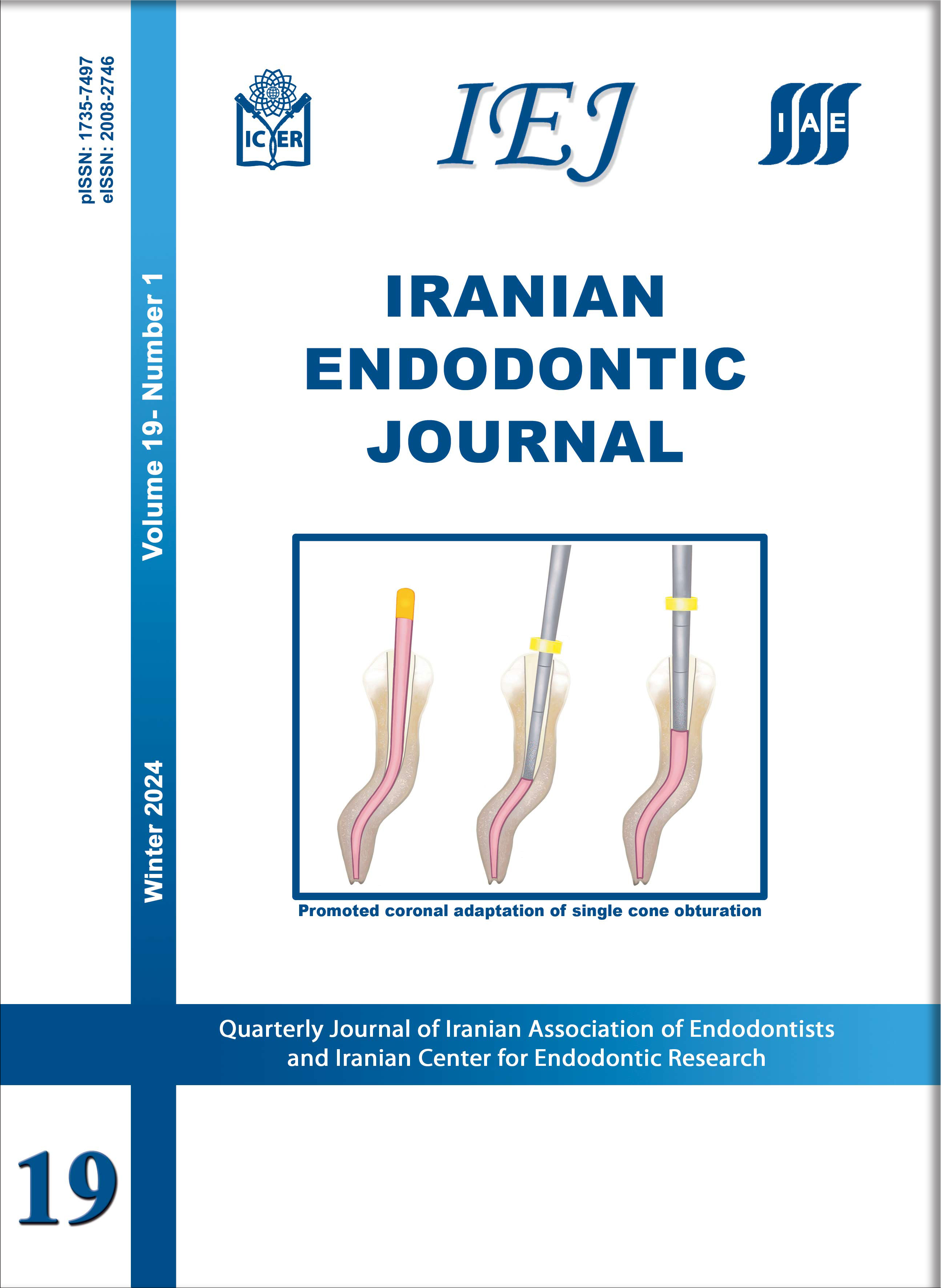The Effect of Different Suture Removal Time Intervals on Surgical Wound Healing
Iranian Endodontic Journal,
Vol. 1 No. 3 (2006),
1 October 2006,
Page 81-86
https://doi.org/10.22037/iej.v1i3.438
INTRODUCTION: This study was carried out to compare the effect of different suture removal time on surgical wound healing. MATERIALS AND METHODS: Twenty-one male albino rabbits were used. Under general and local anesthesia a moucoperiosteal rectangular flap was raised in each animal and then repositioned and sutured. The animals were randomly divided into three experimental groups of seven animals each. In group I and II the sutures were removed after 3 and 5 days respectively and were followed up for 7 and 14 days after surgery. In group III the sutures were removed after 7 days and were followed up for 14 days after surgery. Tissue reactions were observed and recorded using inflammation and gingival indexes at 7 and 14 days after surgery in all three groups. Inflammation and gingival indexes were analyzed by Kurskal Wallis, Firedman and Wilcoxone tests. RESULTS: Results showed that inflammation index was significantly different with two other groups at the day 7 after surgery (P<0.008). Gingival index in group II was significantly different from two other groups at the day 14 (P<0.028); however, there was no significant difference between group II and III at the same interval. CONCLUSION: Based on result of this study, 5 days was recognized to the best time interval for suture removal in comparison with two other time intervals.




